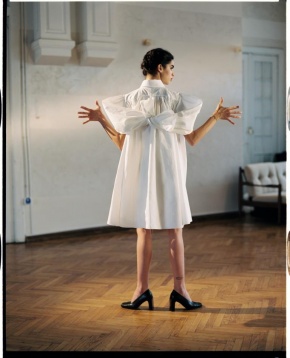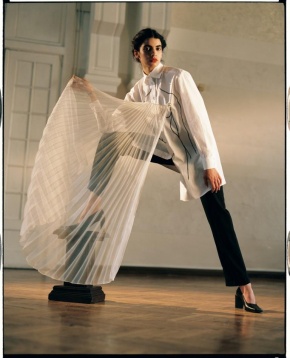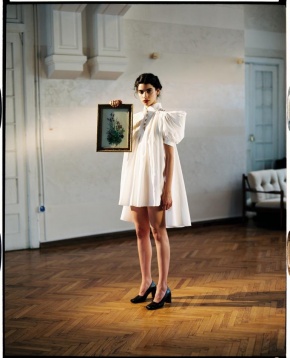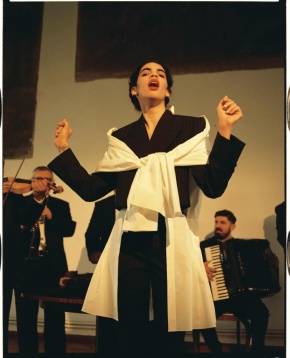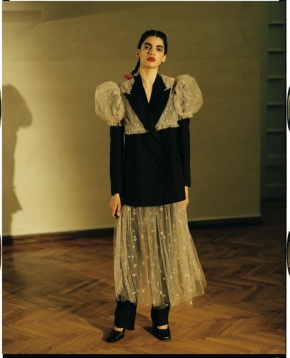HISTORY
SEEN represents the connection between the streetwear culture and the individual’s moods.
SPECIFIC
The purpose of the brand is to reinterpret the commercial dimensions of clothing. They understand the ambiguity, the duality and the power of the moment. But in the end, clothes are just clothes and humans give them power.
ROMANIAN DESIGN WEEK APPEARANCES
2019 // SEEN 5.0 Made in Romania
SEEN 5.0 has been built around the concept “Made in Romania” and Cristina Săvulescu’s childhood memories: she grew up in a small Romanian town and she has explored the post-communist East-European narrative.
For the first time, the brand has focused on traditional Romanian costume: men's shirts have been transformed into very pure and feminine dresses or have been rebuilt together with a suit, in an attempt to recreate a wearable Brancusi sculpture.
The energy and genuine talent of Lizica Codreanu, a Romanian dancer of the ’20s, and Maria Tanase, an important Romanian singer and lover of Brancusi, were the main inspiration for the visuals.
The main goal, as always, is to create duality and tension by using deconstruction, reconstruction, and fragmentation. Nostalgia was at the center of the process but has left room for modernity and pragmatism.
SEEN represents the connection between the streetwear culture and the individual’s moods.
SPECIFIC
The purpose of the brand is to reinterpret the commercial dimensions of clothing. They understand the ambiguity, the duality and the power of the moment. But in the end, clothes are just clothes and humans give them power.
ROMANIAN DESIGN WEEK APPEARANCES
2019 // SEEN 5.0 Made in Romania
SEEN 5.0 has been built around the concept “Made in Romania” and Cristina Săvulescu’s childhood memories: she grew up in a small Romanian town and she has explored the post-communist East-European narrative.
For the first time, the brand has focused on traditional Romanian costume: men's shirts have been transformed into very pure and feminine dresses or have been rebuilt together with a suit, in an attempt to recreate a wearable Brancusi sculpture.
The energy and genuine talent of Lizica Codreanu, a Romanian dancer of the ’20s, and Maria Tanase, an important Romanian singer and lover of Brancusi, were the main inspiration for the visuals.
The main goal, as always, is to create duality and tension by using deconstruction, reconstruction, and fragmentation. Nostalgia was at the center of the process but has left room for modernity and pragmatism.
















